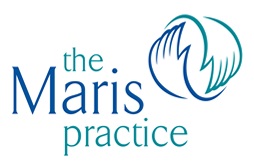 Guest blog from our hypnotherapist, Louise Coyle
Guest blog from our hypnotherapist, Louise Coyle
Pain is a curious and interesting phenomenon. What happens in our body is only one part of it. An equally important part is what happens in our brain. How are those pain signals interpreted? What do they mean, now and in the future? What are our thoughts about the pain or the injury we have experienced?
Our society has made great progress over recent decades in learning how to mend broken bodies and address the physical experience of pain, but we are only just beginning to figure out why it matters to know what is happening in our brains with our thoughts and feelings.
Let me share a little about my own experience of pain. A few months ago I missed a step, went flying and landed on the patio with all my weight on my right hip. The fact that I couldn’t get to my feet and fainted when my family attempted to help me up indicated that I’d done some damage to myself.
Curiously, I would not have described what I was experiencing as pain, my legs felt incredibly heavy and I couldn’t move them, but it wasn’t hurting.
It transpired that I had cracked my hip bone, just around where the ball of the hip joins the femur, and I needed an operation to insert a large screw into my hip bone so that it healed and didn’t begin to separate when I put weight on it. So I needed an operation, several days stay in hospital and several weeks/months of rehabilitation before I got my life back. How was I going to cope?
As a hypnotherapist, I know that hypnosis can be a powerful tool for dealing with pain, which is why so many women find it helpful when they are in labour. In contrast, stress and anxiety can be the worse thing and simply make our experience more unpleasant. I decided that I was going to do everything I could to monitor what I was thinking about the sensations in my body to enable me to remain as calm and relaxed as possible while my body healed.
The first chance I had to practice was in the A&E department when, because it was the early hours of Sunday morning in a busy inner city hospital, I found myself on an uncomfortable hospital trolley, unable to move, in a room with the door closed, no way to get help if I needed it, for three hours! Did I begin to panic as the minutes ticked by and no one came to check on me? Well, yes, I did begin to think through the options for attracting someone’s attention and when I realised there was nothing I could do, bar scream at the top of my voice, I decided to work on keeping my mind as calm as possible. I often teach people several different techniques to do this so I worked through my options:
- Calming breathing – breathing deeply and with an exhalation twice as long as the inhalation helps to keep the stress response in check
- Distancing myself from my thoughts – imagining sitting by a river in autumn and putting each of my thoughts on a leaf then watching them drift down the stream
- Repeating the word ‘one’ in my mind – when I noticed that my thoughts were beginning to spiral into catastrophising, this technique helped me to stay in the moment
I like to think that I’m a calm and relaxed type of person but this tested me!
Then, after two days of lying flat in a hospital bed talking to various doctors and having several different scans, I finally had my operation and my body began healing. I decided that I was going to tell myself that every sensation that I felt in my leg and hip were signs of my body knitting itself back together.
So what did I do? I was having what I describe as explosions of sensation in the nerves along my leg – I’m told as a result of a number of nerves needing to be cut during the surgery. I made a conscious decision to think of these sensations as explosions of white stars, which were zooming up and down inside my leg sealing the tissue back together as they went. So, when I was awoken during the night by these sensations, I would tell myself “I can feel the white stars again, sealing everything back together”. I found that this helped me to remain calm, to fall back to sleep and not to worry. Those stars zoomed up and down my leg for a considerable time!
I teach people to use hypnosis in this way, to find out how they can change their perception of a pain or discomfort to enable them to turn down the pain. Imagining white stars won’t work for everyone, but perhaps you can imagine that you have a pain dial in your brain and you can turn the dial down as far as you wish to! Or perhaps you can imagine that the pain is a colour, and you can spread the colour out thinner and thinner until it is transparent and begins to dissolve. Or, that the sensation is captured in bubbles rising up your body until the pain fizzes away into nothingness.
Another way in which my therapy training helped my recovery was the ability to remain confident that I was going to recover. The healing sensations – not pain – were just a symbol of the muscles and bones knitting back together, not of any damage being done. Thinking in this way meant that I was able to push myself to move my legs as the physios were asking me to and to keep pushing myself as the days went on. I was healing, I wasn’t damaged, and I was going to fully recover!
Even now, when I can feel the muscles in my leg haven’t yet regained their full range of elasticity as I walk, I find myself thinking about stretching those muscles, bit by bit, day by day, until they are completely restored. Of course, I’ve had help with my recovery, physiotherapy, osteopathy, massage are all important factors, but getting your mind on board, that’s a key factor.
Anyone can learn the techniques of hypnosis to manage pain more helpfully, it isn’t magic, it’s just know how to employ the powers of your imagination in a positive way. We can do this with all kinds of pain. If you would like to ask any questions about this or how hypnosis can help, then message me and I’d be happy to talk.
